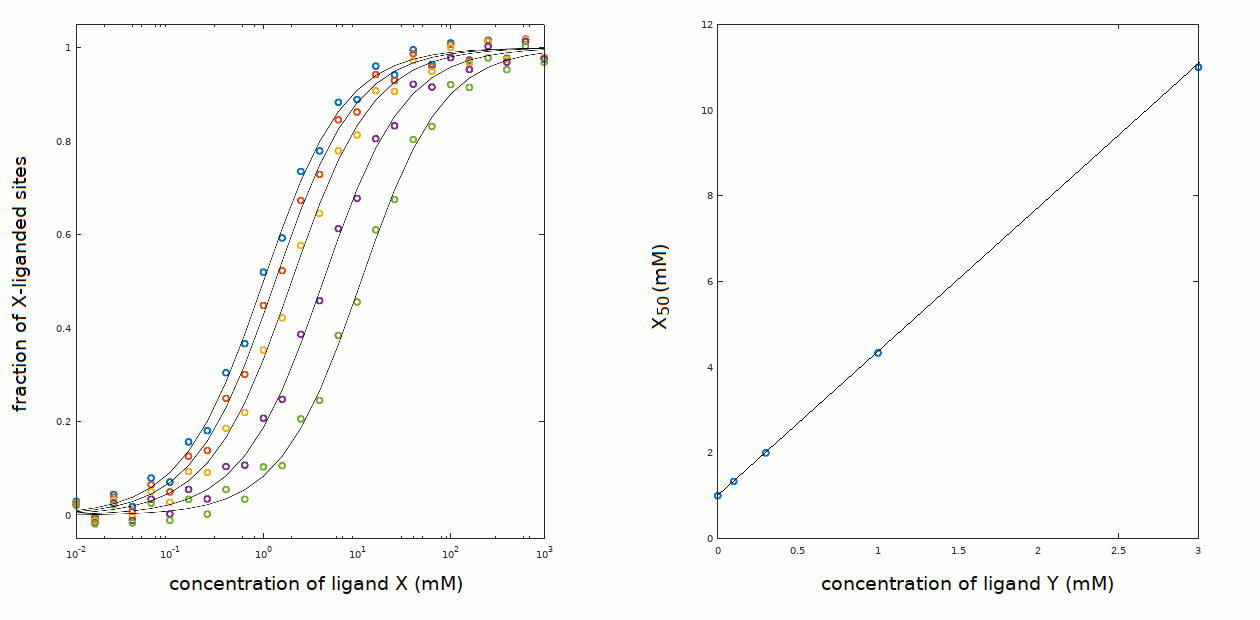A protein can bind two ligands (X and Y) at the same site, but their binding is mutually exclusive; the reaction scheme is as follows:
A series of experiments has been carried out in which binding of ligand X has been followed at several (fixed) concentrations of Y: 0, 0.1, 0.3, 1 and 3 mM.

The protein concentration was 0.05 mM, and the protein is pure and monomeric in solution. A common way of representing 2-ligands experiments is to plot the C50 for the ligand whose concentration is varied versus the concentration of the ligand whose concentration is invariant; in this case the X50 as a function of [Y] (left panel). In the present case this plot is linear.
To proceed with data analysis you need to write down an equation that reflects the raction scheme given above and describes the fraction of sites bound with ligand X as a function of the concentrations of ligands X and Y. For the present tutorial we assume that the signal you use faitfully monitors either [PX] or [PX]/[P]tot. Write down the equation you need and then proceed to next step.